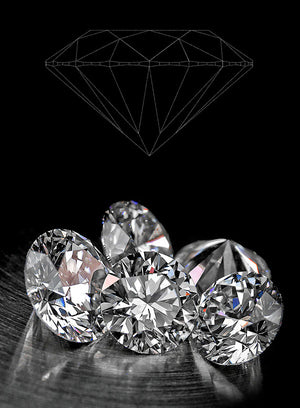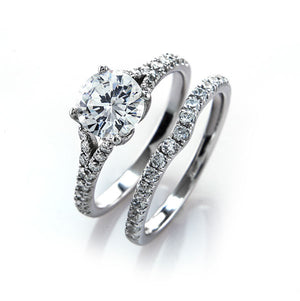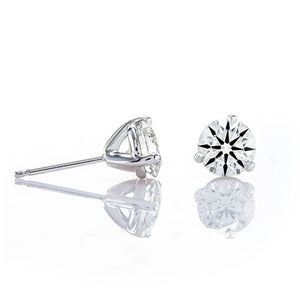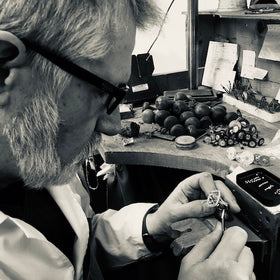
How accurate are those diamond cut calculators?
“I’m trying to determine the best options available within the current inventory of in-stock Brian Gavin Signature round hearts and arrows diamonds, as opposed to those that are available to be pre-ordered from the factory, because I’m in more of a hurry. While all of the BGD Signature diamonds seem to be pretty similar in diamond cut quality and proportions, I’m sure that there has to be a visible difference created by the slight difference in proportions, or at least that is what I have been led to believe via diamond cut calculator; but I’ve read mixed reviews about the accuracy of diamond cut calculators – what are your thoughts? How accurate are those diamond cut calculators, and how should I go about picking the best diamond from Brian Gavin?”
The challenge with buying diamonds by the numbers:
The problem with trying to buy diamonds by the numbers is that diamonds are a three-dimensional prism, which must be properly proportioned and structured for light to travel through them properly, and be reflected back up towards the viewer (that’s you) with the highest intensity and volume. Thus the proportions of a diamond are only part of the puzzle so-to-speak, and statistics will only take you so far. As a fifth generation diamond cutter, Brian Gavin knows better than anybody, that each diamond must be cut in such a way that the sections of the diamond structure must be balanced to create perfect harmony.
The fact of the matter is that there are a lot of diamonds out there, which have been cut to what many people purport to be perfect proportions, which do not exhibit the highest volume of light return and sparkle factor, simply because the facet structure of the diamond lacks optical precision; which is why every Brian Gavin Signature diamond is carefully examined through various reflector scopes, to determine that the degree of optical precision, is the very highest quality possible.
Where diamond cut calculators fall short:
One of the most popular online diamond cut calculators that we’re aware of, only looks at the basic outside framework of the diamond, it only takes the total depth, table diameter, crown angle, and pavilion angle into account; it assumes that the girdle thickness of the diamond that you are entering into “the system” will have a medium thick girdle, and this is simply not the case in most instances.
In addition it fails to account for the fact that there can be a significant variation in the crown height and pavilion depth measurements, as well as variations in the crown angle and pavilion angle, and while these variations will be clear to an experienced diamond grader when the diamonds are viewed through an ASET Scope, Ideal-Scope, and Hearts & Arrows Scope, the fact is that the average online diamond cut calculator does not take this type of variation into account.
Another critical factor that diamond cut calculators do not take into account is the length of the lower girdle facets, which have a direct impact upon the size and intensity of the sparkle! This is equivalent to trying to predict the performance of a sports car based solely upon an estimation of how the shape of the car will cut through the wind, without taking other critical factors such as the engine and transmission into account, let alone the degree of craftsmanship and skill that goes into the design and assembly of the vehicle.
The reality is that the only purpose that a diamond cut calculator can possibly serve, is to help us eliminate diamonds that have proportions which are likely to result in levels of light return that are truly less than desirable. Diamond cut calculators cannot predict light performance, because they simply lack the technology to provide that kind of in-depth assessment, but it is available from the American Gem Society Laboratory (AGSL) by way of Angular Spectrum Evaluation Technology (ASET), which every Brian Gavin Signature diamond is subjected to as part of the Light Performance evaluation conducted by the AGSL.
Brian Gavin could choose to send his production to the GIA Gem Trade Laboratory, and easily obtain overall cut grades of GIA Excellent on all of his Brian Gavin Signature diamonds; but he sends them to the AGS Laboratory to be graded on the Light Performance grading platform, because Brian Gavin Sets The Standard for Hearts and Arrows Diamonds, nothing short of an actual light performance evaluation will do.
















